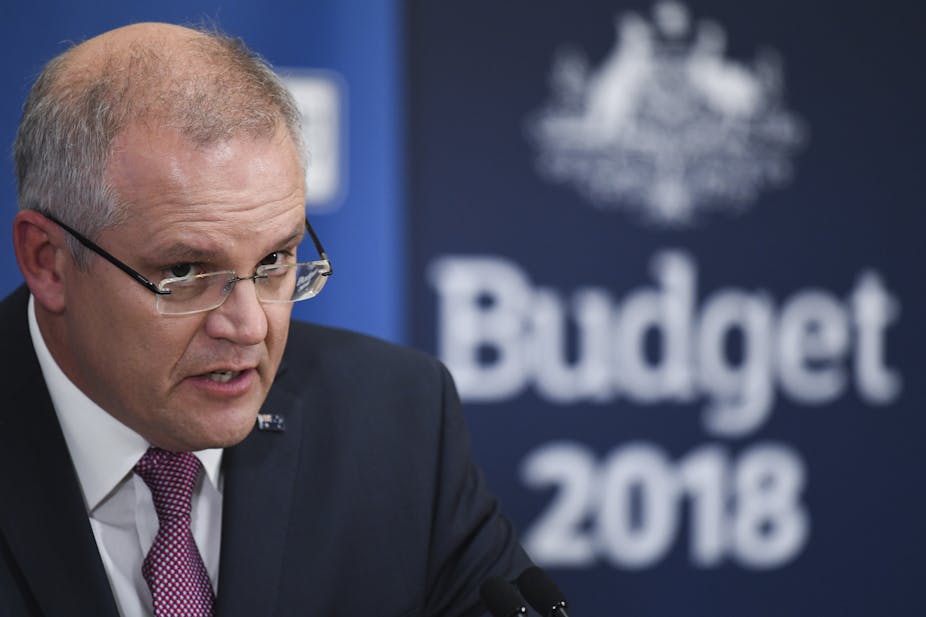The Turnbull government has produced a budget that it hopes it can sell as appealing for voters while appearing fiscally responsible.
Its income tax cuts target lower and middle earners in the early stages, delivering a benefit of up to $530 a year for them. If this seems modest, Scott Morrison was anxious to point out that it could pay your car rego, your quarterly electricity bill or half a dozen tanks of petrol.
In the longer run, the cost is not so modest - $140 billion over a decade. While some relief is delivered in the near term, it’s worth noting the structural change, scrapping the 37% bracket, is not timed until 2024-25 - which is beyond the next two elections.
Asked why the government didn’t prioritise attacking debt and deficit over tax relief, the Treasurer told journalists in the budget lock up that it was because “I respect taxpayers”. This was not “spending” - it was people being able to keep their own money, he said.
But in this budget, it was vital for the government that it be seen to be fair dinkum about fiscal repair. Thus it has brought the return to balance forward by a year - a surplus of $2.2 billion is forecast for 2019-20. It might be minuscule but the surplus is there, in that year, to make a point, including to the ratings agencies. The budget also has net debt peaking in this financial year, a little sooner than previously predicted.
On the spending side, the budget is restrained, with initiatives targeted. It has an eye to older voters with several measures, including increasing the number of high level home care places by 14,000 at a cost of $1.6 billion over the budget period. This is perhaps less dramatic than it seems, because in part it represents a reconfiguration of aged care - more people want to stay in their own homes, rather than move to residential care facilities.
In seeking savings and revenue, a pre-election budget must tread carefully. There are not swingeing cuts. But there are some familiar and soft targets: “social welfare debt recovery”, “encouraging self-sufficiency for newly arrived migrants”, and “streamlining services for refugees”.
The revenue quest includes combatting illicit tobacco, in yet another crackdown on the black economy. Whether the estimated billions will all be collected remains to be seen.
There are forgotten people in this budget, those without electoral or other clout. Most notably, the Newstart benefit for the unemployed has yet again not been raised despite widespread recognition of its inadequacy.
While the budget will come in for its share of criticism, looked at overall it is designed not to offend an electorate that has already turned off the government.
Though people will be pleased to get a tax cut, they are unlikely to be grateful to the government for it. Rather, they will probably be more inclined to see it as simply their due.
But the budget does reinforce the fact that tax is to be a central battleground for the election.
Labor has plenty of money available for its competing tax package, especially in the longer term, because it has set itself against the government’s expensive tax cuts for big business, and so can use these funds for its tax and spending plans.
On income tax, the most intense competition will be around middle and lower earners, on whom the government has concentrated in the early stage of its package.
More generally, the government is pinning a good deal of hope on being able to brand its opponents as high taxers, with their crackdown on negative gearing, trusts and the like.
Hence Morrison’s tax “speed limit”, set at 23.9% of GDP. It’s not a number that is likely to have much resonance with the ordinary voter - nevertheless Labor will face a challenge to persuade people that the tax hikes it does propose are both fair and justified.
How effective this budget will be in helping shape the election debate won’t become clear until we have a detailed counterpoint to it, in the form of Labor’s pitch to the electorate.

